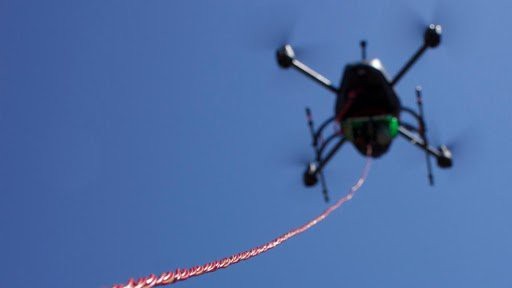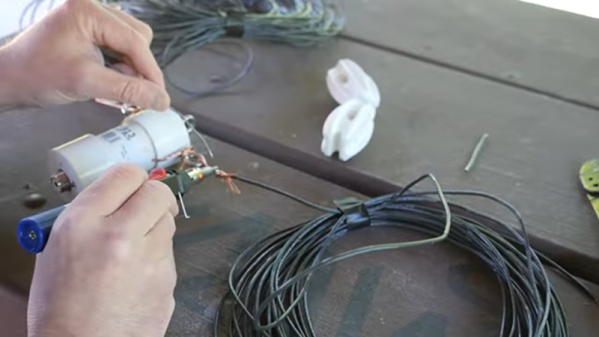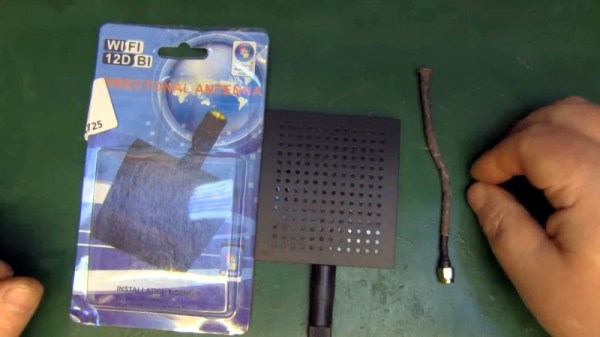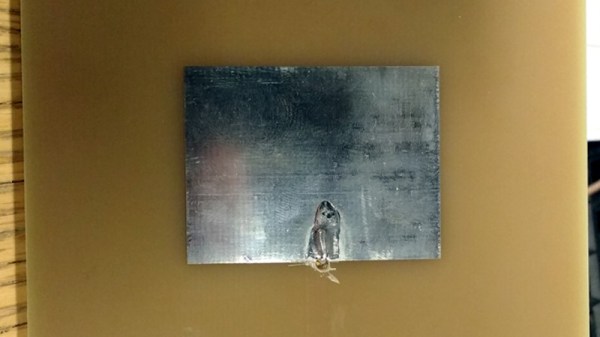When it comes to radio communications on the VHF bands and above, there’s no substitute for elevation. The higher you get your antenna, the farther your signal will get out. That’s why mountaintops are crowded with everything from public service radios to amateur repeaters, and it’s the reason behind the “big stick” antennas for TV and radio stations.
But getting space on a hilltop site is often difficult, and putting up a tower is always expensive. Those are the problems that the Sky Anchor, an antenna-carrying drone, aims to address. The project by [Josh Starnes] goes beyond what a typical drone can do. Rather than relying on GPS for station keeping, [Josh] plans a down-looking camera so that machine vision can keep the drone locked over its launch site. To achieve unlimited flight time, he’s planning to supply power over a tether. He predicts a 100′ to 200′ (30 m to 60 m) working range with a heavy-lift octocopter. A fiberoptic line will join the bundle and allow a MIMO access point to be taken aloft, to provide wide-area Internet access. Radio payloads could be anything from SDR-based transceivers to amateur repeaters; if the station-keeping is good enough, microwave links could even be feasible.
Sky Anchor sounds like a great idea that could have applications in disaster relief and humanitarian aid situations. We’re looking forward to seeing how [Josh] develops it. In the meantime, what’s your world-changing idea? If you’ve got one, we’d love to see it entered in the 2020 Hackaday Prize.





















